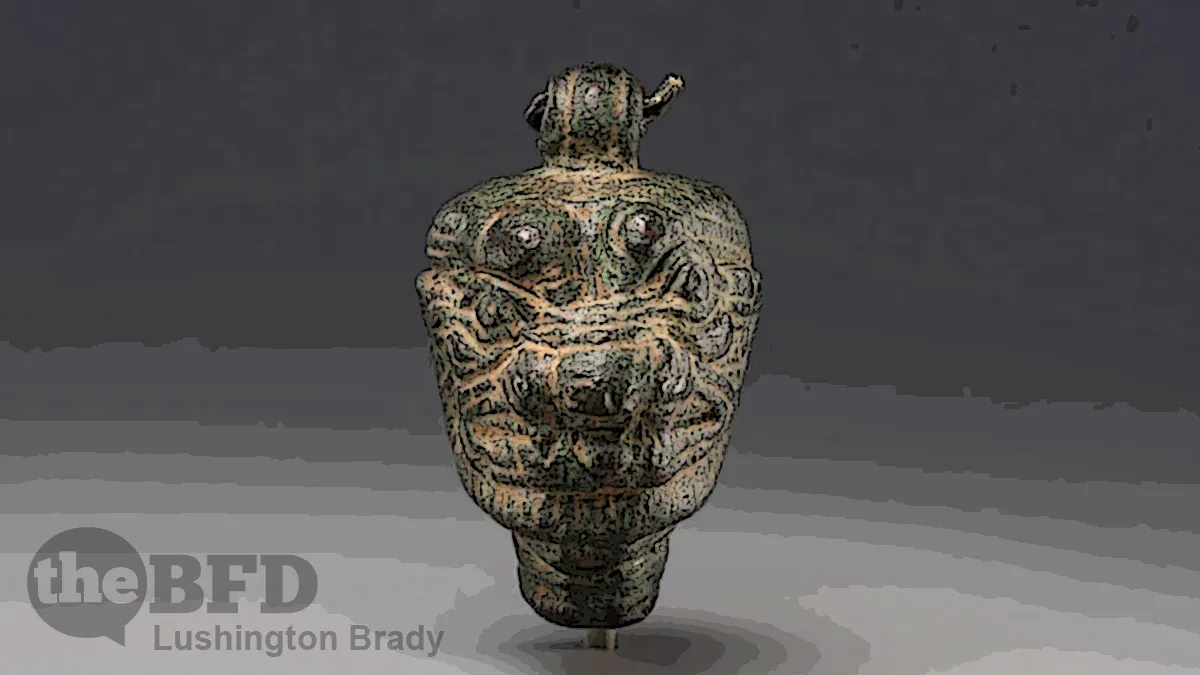In the original film of The Exorcist, the demon that possesses young Regan is never named. But he is linked several times to an ancient statue, and amulet, of an ancient Mesopotamian demon. That demon is named explicitly as “Pazuzu” for the first time in the unfairly derided sequel, Exorcist II: The Heretic.
Which is indeed the name of an ancient demon that haunted the Mesopotamian imagination at least 3,000 years ago. The statue and amulet of Pazuzu featured in the movie are in fact very real relics of an ancient cult.
In ancient Assyrian and Babylonian religion, Pazuzu was the king of wind demons, a dichotomous evil entity who simultaneously brought famine and destruction and warded off other demons. Per the Encyclopedia Britannica, the earliest archaeological evidence of Pazuzu, discovered in the grave of a royal woman near present-day Iraq, dates back to the eighth century BCE.
Images of Pazuzu are similar to those of other Mesopotamian demons, but with some distinct characteristics. Pazuzu’s head takes on a more rectangular shape and features horns, heavy eyebrows, a two-pronged beard, and an open canine-like mouth displaying his teeth and tongue.
In The Exorcist, Father Merrin (Max von Sydow) remarks, over an amulet of Pazuzu, “Evil against evil.” Which is an apt enough description of Pazuzu’s cult.
The ancient Assyrians and Babylonians regarded Pazuzu as an evil demon of the underworld who could control the wind, bringing famine during the dry seasons and storms and locusts during the rainy season. Ancient humans tried to offset Pazuzu’s destructive nature by offering prayers to him, hoping that he would contain the winds and use them for more benevolent purposes.
Although Pazuzu was considered to be evil, he was not evil incarnate. Pazuzu was regularly seen as a protective force as much as a destructive one, and he was invoked for protection from other demons – in particular, protecting pregnant women and children from the demoness Lamashtu, who was said to viciously murder young and unborn children.
Invoking a demon as protector may seem contradictory to us, but that’s because “demon” has a very different meaning in modern Western culture than in the ancient Mediterranean and Near East. In those cultures, demons were simply spirits, somewhere between gods and humans. Some were not evil at all, and even those who were, were often complex personalities rather than the purely malignant figures of Christian mythology.
The Mesopotamians believed that the small statuettes and charms depicting Pazuzu drew small amounts of his power to protect them, as they were honoring him by wearing the protective charm, and that when invoked, he would direct that power at those who had not invoked him […]
Amulets and other iconography of Pazuzu have been found in locations ranging from the Levant, Mesopotamia, and Iran to the Greek island of Samos, while written sources describing Pazuzu began to appear around 670 BCE.
Another curious facet of these ancient cultures was believing that depicting the likeness of spirits like Pazuzu attracted their attention. Which is why full-body statuettes of Pazuzu exist, but not full-size statues (the one depicted in the opening scenes of The Exorcist is a prop), and the most common amulets are of his head only.
Often, these amulets and pieces of jewelry depicting Pazuzu are inscribed on the back with the images of other Mesopotamian deities, usually those considered to be allies of humans. Scholars believe this may have been done to protect the wearer and redirect Pazuzu’s power away from humans […]
In one instance, a Pazuzu statuette was found in an abandoned house, hung directly across from the entrance, leading historians to believe it had been put in place as a protection from other demons.
All That’s Interesting
Demons such as Ereshkigal, the Queen of the Dead, of whom few likenesses seem to have ever been made. No doubt because attracting her attention in any degree was surely perilous.
While Pazuzu was, judging by the widespread prevalence of his iconography throughout the ancient world, a popular protective figure, like all demons he fell into disrepute with the advent of Christianity. Instead of a dangerous protector, he and other demons became merely maleficent spirits of evil.
And ultimate Hollywood boogey-men.









